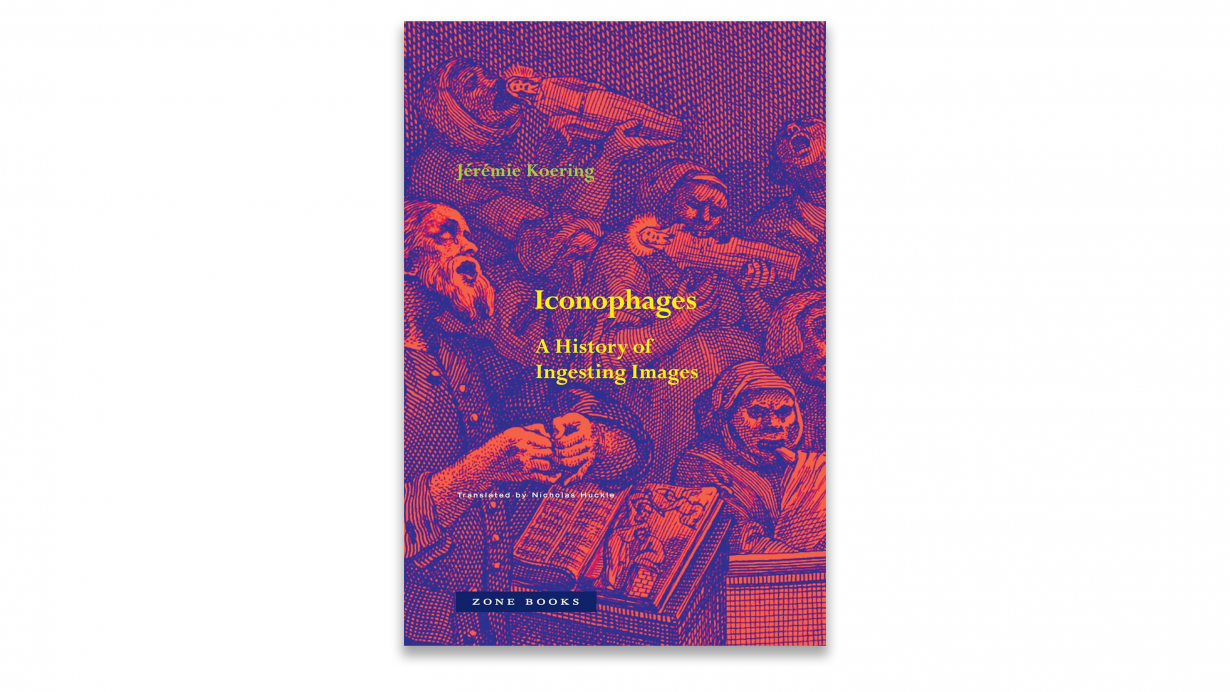In Iconophages by Jérémie Koering, it turns out that swallowing images, artefacts and even artworks has a long and complex legacy

Inhale this detailed academic study of the practice of eating images. Inject it in your veins. Jérémie Koering (professor of early-modern art history at the University of Fribourg) ate – no crumbs. Metaphors of bodily apprehension – more or less ravishing, more or less cringe – are not new in descriptions of how texts or images work on us, though the terms may go stale more swiftly now. What else is taste but the most venerable assertion of a short alimentary slide from digestion to understanding, from the fussy menu of forms to the full belly of aesthetic satisfaction? But who would think of actually eating a picture or drinking a sculpture, pulverised? Koering’s subject seems initially a kind of madness or the stuff of horror: the first images reproduced in Iconophages show Ralph Fiennes as a serial killer in Red Dragon (2002), ravening down William Blake’s watercolour The Red Dragon and the Woman Clothed in the Sun (1805).
It turns out that swallowing images, artefacts and even artworks has a long and complex history, especially but not solely religious. The Egyptians employed stone figures and stelae for healing purposes, the patient drinking water that had been poured over the object. (If an artefact was engraved with text, the flow of liquid became a kind of reading, as if the therapeutic message had been scanned before ingestion.) Early Christianity was built on scenes of material-spiritual migration: death into life, body into soul, flesh and blood into ceremonial wafer. But the Church became troubled by its own veneration of martyrs – their remains, physical relics and images, edible or otherwise. On the one hand, saintly virtue was said to travel from the uncorrupted corpse to any remnant that might have touched it, and onwards even to mirrors placed before the body or objects, including foodstuffs, reflected in those mirrors. A blessed chain of saintly influence, which the faithful were in danger of worshipping (or relishing) above Christ himself.
Iconophages is filled with instructive, comical or grotesque examples in this vein. When Thomas Becket was martyred at Canterbury in 1170, his blood-drenched shirt was soaked in water, the infusion of which then cured a woman of paralysis. In the same century, depending on the image, the abbot and mystic Bernard of Clairvaux was pictured either drinking the breastmilk of the Virgin Mary, or receiving same from a statue; either way, engravings show the Virgo Lactans directing laserlike streams in his direction. Not pictured in Iconophages: the legend that Bernard later suckled his own monks. Of course, none of this will seem especially outré if you have been around the Catholic liturgy, let alone private or public invocation of the saints. (I grew up with all of this – reliquaries to be kissed, a light rain of holy water and a photograph in my childhood prayer book where I thought a priest’s hand, reflected in a chalice, were the actual Christly meat, transubstantiating.) As Koering notes, it was ample material for antipapist outrage during the Reformation and later satire such as Hogarth’s Enthusiasm Delineated (1760–62), with its statue-munching congregants.
So rich and suggestive is Koering’s medieval and early-modern material – and so exhaustive his research, with almost a hundred pages of notes – that his treatment of more recent instances of image-eating, in modern and contemporary art, may feel like a helping too far. Not to say that Piero Manzoni’s Uova (1960), Dennis Oppenheim’s Gingerbread Man (1970) or John Cage’s series of Wild Edible Drawings (1990) don’t invoke the earlier history in canny or absurd ways. But the real fascination of Iconophages is in the way in which it retrospectively explodes certain categories in art and art history, including representation itself and the nature of aesthetic experience. If you are kissing, licking or eating images because you think they contain and transmit a saintly virtus or healing power – does that make you a mystic or the basest kind of materialist? An angel is an idea with wings, but a saint is all body, all of the time and everywhere. The terms all dissolve in delirious consumption.
Iconophages: A History of Ingesting Images by Jérémie Koering. Zone Books, £30 (hardcover)